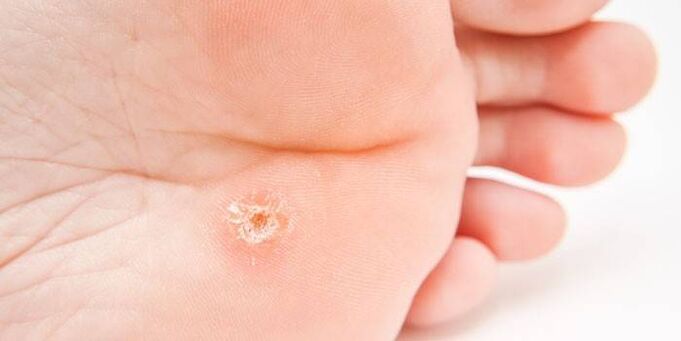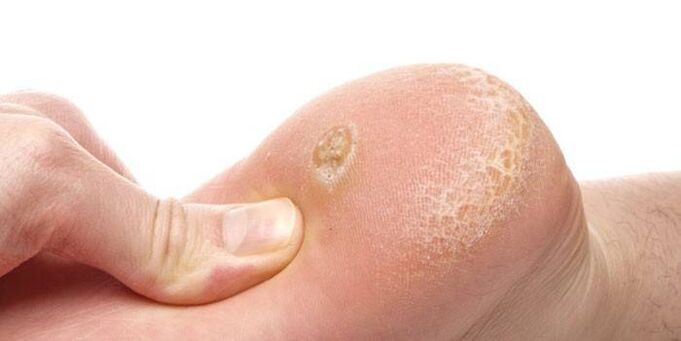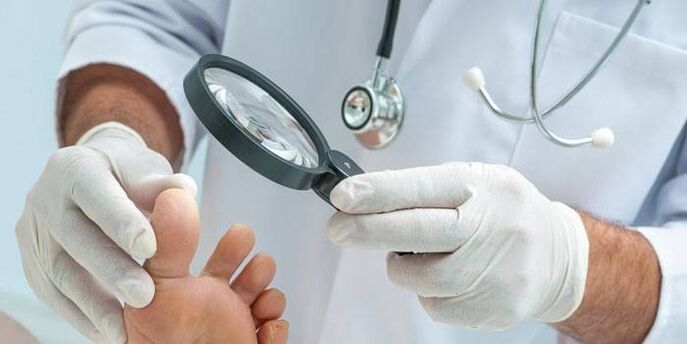Since ancient times, the ugly formations on the body have been haunting human beings. Warts on the feet are a skin disease caused by a virus. Avoid people with skin defects, worry about infection, and notice tumors on the soles of their feet or other parts of the body, and they try to remove them as soon as possible. Who does not apply to their plantar warts, as long as they disappear forever. So far, dermatologists have been looking for the most effective and painless way to treat this disease.
What are warts
Human papillomavirus can cause benign or tumor mutations in DNA in skin cells. The whole body is covered with papillomas, warts, and papules. More than one hundred types of HPV have been studied. Warts are skin growths that indicate the presence of the first or third type of papilloma virus in the body. Due to the pathogen's ability to survive in the external environment, tumors may not be carcinogenic, but they are extremely infectious.
What do the warts on the legs look like?
Plantar tumors are round with clear edges and a few millimeters or centimeters in size. In the center, black spots of blocked capillaries can be seen. On the legs, they look like dry calluses that have grown to the skin. The pain of plantar growth does not manifest under direct pressure, but when compressed. The absence of papillary lines on the feet is characteristic.

Causes of plantar warts
HPV infection is more frequent during unprotected sex. The virus penetrates through microcracks in the mucous membrane of the reproductive organs. Some people's HPV is "transmitting", while others are not so lucky-the virus lingers in the body without notifying themselves for a long time. Dermatologists do not rule out that immune disorders and infectious diseases promote the appearance of papilloma on the surface of the foot.
Walking barefoot in public places: baths, swimming pools, beauty salons, shared bathrooms, on the beach, barefoot trying on shoes are the most common causes of plantar warts. The virus can survive outside the host and "lurking on towels, tiles, towels, furniture, guest slippers, etc. waiting for victims. "The infection is attracted by the dense, tight areas of the sole surface and palm skin, and the papilloma virus enters through minor injuries.
Warts on children's legs
The children are agitated and often injured. Parents may not be aware of the presence of HPV obtained through cuts and abrasions in their children. As immunity weakens, the virus becomes active, and papillomas appear on the legs. The painful treatment of leg warts in children is usually contraindicated and poorly tolerated. Usually, the child's body will deal with this foot skin disease on its own.
Types of warts on the legs
Warts are a collection of skin lesions caused by papilloma. According to the external manifestations and the impact on human health, warts are divided into the following types:
- Vulgar (ordinary)-round keratinized blisters;
- Flatness-the appearance of a rash in the form of spots above the skin;
- Acrochords-elongated "tear" edges, formed in the folds of the body;
- Condyloma acuminatum-a comb reminiscent of a rooster;
- Senile (keratoma)-Occurs in the elderly and has nothing to do with HPV.
The warts are distributed throughout the body, internal organs and oral cavity. Warts on the feet, called plantar warts, are a common disease. One type includes good shape, which is a depression that presses into the skin and is characterized by rapid growth. The appearance of subungual growth slightly raises the nail plate.

Plantar warts treatment
Neglecting the treatment of plantar warts is dangerous. The tumor on the foot keeps hurting. They are removed to prevent the emergence of new growth and the entry of infection. There is no complete cure for HPV. Treatment is reduced to turn the disease into a "sleep mode". The plantar warts can be removed with medicine, surgery, and immune regulation, and alternative medicines can be used.
The disadvantage of treating plantar hyperplasia is their location: the large stratum corneum of the epidermis makes it difficult to transport the active substance deep into the foot stratum. When preparing for treatment, soak the top layer of the deposit and exfoliate it. Traditionally, the treatment of foot warts started with the use of salicylic acid. Warts on the feet once a day for three months, take a bath, disinfect, and then use pumice to remove the softened top layer, apply salicylic acid, and put on a patch.
Chain pharmacies suggest how to remove warts on the legs with the help of drugs containing celandine, phenol, and trichloroacetic acid. These drugs can cause tissue necrosis and reduce the patient's deficiency, but will leave traces of healing of deep wart wounds. Each disease has different degrees of individual differences, so you should consult your doctor before choosing how to remove plantar warts.
ointment
According to the method of action, it has necrotic, antiviral, herbal ointment. In the first case, the acid or alkali in the ointment base can burn painful growths and leave scars. At home, for foot treatment, you can use a liquid solution: the ingredients contain acetic acid, nitric acid, oxalic acid, and lactic acid. To avoid burns, the surface of the tumor is strictly treated.
Antiviral ointment for foot warts is applied to the growth itself and the surrounding area to reduce the growth of infection. They are used with special ointments. The herbal ingredients only affect the formation of the skin. Known for its effectiveness in the treatment of foot creams with applicator colhamin ointment.
Modern removal methods
The emergence of modern methods of removing warts replaced traumatic scalpels. Similar to a surgeon's knife, a coagulator uses electric current to burn tumors on the feet. After the laser or radio wave removal procedure, a depression will be left on the foot. Healing takes several weeks. Exposure to liquid nitrogen is considered a very painful treatment and requires multiple treatments. In 2014, a British dermatologist published an article on the latest antigen injection therapy. It will help patients who are resistant to existing treatments.

Folk remedies
The procedure of using folk remedies to treat leg warts is carried out before going to bed, and the feet are steamed in advance for a long time. During the treatment, wear latex gloves to protect your hands from the further spread of infection, and disinfect all used equipment and objects to prevent infection of your loved ones. List of folk methods that are considered effective to remove wart feet:
- Garlic is famous for its antibiotic properties. In the tumor on the sole, cut off the upper hardened layer and apply a thin clove of garlic.
- Can make "beard-proof dough". It is kneaded with grated garlic, vinegar, and wheat flour, applied to the surface of the tumor and sealed with plaster. After a few days, the dough was removed along with the accumulation.
- Spread onions soaked in vinegar on your feet, or you can wipe the growing parts with vinegar and then attach fresh onions.
- You can fill the ground with the juice of medicinal plants: celandine, kalanchoe, marigold, milkweed, dandelion, golden beard, or attach a piece of apple, mountain ash, fig, potato, horseradish, cabbage. This procedure is carried out every day for several weeks to several months until the accumulation disappears.
- You can apply wood ash diluted in water into a cream.
- Sprinkle the growth with powdered chalk and wrap it with a bandage. The compress should not get wet.
- Birch bark and willow bark containing salicylic acid have been shown to be effective in treatment. Spread the bark on the feet and soften it with boiling water in advance.
- Soaking feet in hot water with sea salt, soda water, laundry soap, tea tree oil or spruce broth can help treat foot diseases. The treatments can be mixed or alternate.
- Use the wormwood soup app. Brew 3 tablespoons of dried wormwood in a glass of boiling water and hold for at least 2 hours.














































































